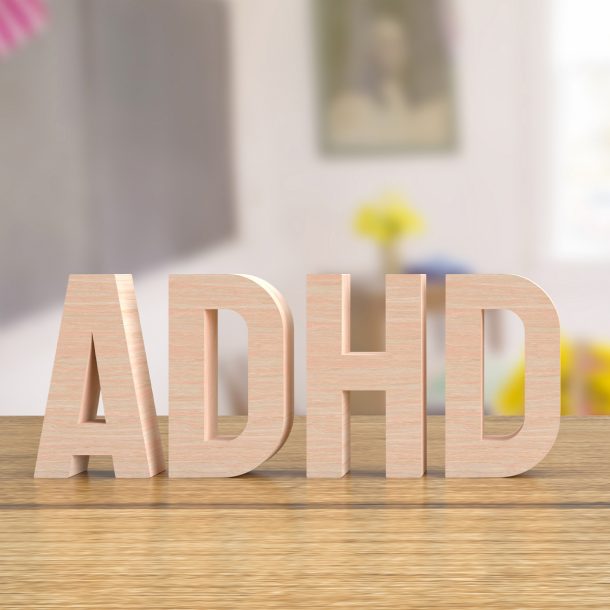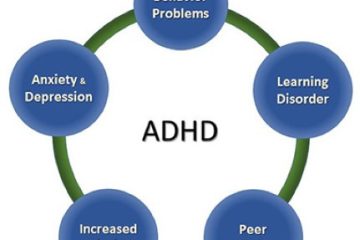Attention-Deficit/Hyperactivity Disorder (ADHD) is a neurobiological condition characterized by persistent patterns of inattention, hyperactivity, and impulsivity. Although ADHD is among the most researched childhood disorders, the exact causes remain complex and multifactorial. Current research has identified several contributing factors, ranging from genetics and brain structure to environmental influences. At Brimex Medical, Inc., our intellectual and developmental disability support programs provide comprehensive resources to help patients find their rightful place in the community, especially those affected by ADHD. This article explores the current understanding of ADHD causes, offering a detailed perspective on each contributing factor.
Understanding ADHD: A Common Childhood Disorder
ADHD has become one of the most diagnosed and researched childhood conditions. According to recent national statistics, ADHD affects about 9.4% of U.S. children aged 2-17, with boys being over twice as likely to be diagnosed than girls. The increasing prevalence could reflect a true rise in ADHD cases, but it may also result from improved awareness and diagnostic tools. ADHD frequently co-occurs with other disorders, including learning disabilities, anxiety, and language difficulties, which can further complicate diagnosis and treatment. As a disorder that impacts focus, behavior, and self-regulation, ADHD often poses significant challenges in educational and social settings, highlighting the importance of early identification and intervention.
Causes of ADHD: An In-Depth Look
1. Brain Anatomy and Function
Research suggests that structural and functional variations in specific brain regions can contribute to ADHD. Neuroimaging studies reveal that individuals with ADHD often have lower activity levels in brain areas that manage attention, planning, and impulse control, such as the prefrontal cortex and basal ganglia. These regions play essential roles in regulating behavior, attention, and motivation.
- The Prefrontal Cortex: Often referred to as the brain’s control center, the prefrontal cortex manages planning, decision-making, and impulse control. In individuals with ADHD, this area shows reduced blood flow and neural activity, which can result in decreased self-regulation.
- The Basal Ganglia: This group of structures is vital for motor control and habit formation. Lower activity in the basal ganglia can contribute to the hyperactivity and impulsivity symptoms seen in ADHD.
- Practical Example: Children with ADHD may find it challenging to complete tasks that require sustained focus, like homework or following multi-step instructions, due to these brain function anomalies.
Understanding the brain’s involvement in ADHD emphasizes the biological aspect of the disorder, demonstrating that ADHD is not merely a matter of “misbehavior” but rather a neurologically based condition requiring specific support and interventions.
2. Genetic Factors and Heredity
ADHD tends to run in families, highlighting a strong genetic component. Studies indicate that a child with ADHD has a 25% chance of having a parent with ADHD, and close family members, such as siblings, also have an elevated risk of diagnosis.
- Genetic Markers: Researchers have identified several genes associated with dopamine regulation, a neurotransmitter linked to reward and motivation. Alterations in these genes may affect dopamine function, contributing to ADHD symptoms.
- Inheritance Patterns: Genetic studies reveal that parents often discover their own ADHD symptoms upon their child’s diagnosis. This intergenerational link underscores the need for a family-centered approach to ADHD treatment.
- Practical Support: Family counseling and genetic education can help affected family members understand ADHD’s genetic basis, fostering acceptance and collaborative support.
The heritable nature of ADHD means that support networks, including services like Brimex Medical, Inc., can make a profound difference by offering programs that address both the individual and family needs.
3. Significant Head Injuries
Head injuries, especially those affecting the frontal lobe, can result in ADHD-like symptoms. While traumatic brain injuries (TBIs) do not cause ADHD in most cases, they can increase the likelihood of developing symptoms similar to ADHD, such as impulsivity and difficulty focusing.
- Types of Head Injuries: Injuries resulting from falls, sports, or car accidents are common in children and can affect cognitive functions when severe.
- Symptoms Overlap: TBIs can lead to attention deficits, impulsivity, and mood regulation difficulties, which mimic ADHD symptoms.
- Interventions: For children who develop ADHD-like symptoms post-injury, cognitive rehabilitation and behavioral therapies can support recovery. At Brimex Medical, Inc., our developmental disability support services aim to provide tailored support for each child’s unique needs.
This connection illustrates how various external factors may exacerbate or contribute to ADHD symptoms, emphasizing the importance of personalized care in treatment.
4. Prematurity and Low Birth Weight
Premature birth and low birth weight are significant risk factors for ADHD. Children born before 37 weeks or with a birth weight under 5.5 pounds have higher rates of ADHD diagnoses, likely due to underdeveloped brain structures at birth.
- Neonatal Development: Premature infants often have underdeveloped organs and brain structures, which can result in long-term cognitive and behavioral challenges.
- Supportive Therapies: Early intervention, including occupational and developmental therapies, can enhance cognitive function and behavioral regulation in children born prematurely. Brimex Medical, Inc. provides resources to support early childhood development, offering families the tools they need to foster resilience and growth.
This highlights the importance of continuous monitoring for children born prematurely to identify and address potential developmental concerns as early as possible.
5. Prenatal Exposures to Substances
Exposure to alcohol, nicotine, and certain drugs during pregnancy can increase the risk of ADHD in children. These substances can interfere with fetal brain development, leading to long-term behavioral and cognitive effects.
- Nicotine and Alcohol Exposure: Smoking during pregnancy restricts oxygen to the fetus, which can lead to lower birth weight and increased risk for ADHD.
- Alcohol and Fetal Alcohol Spectrum Disorders (FASD): FASD often presents with symptoms similar to ADHD, such as impulsivity and attention challenges.
- Preventive Measures: Education on the risks of substance use during pregnancy and comprehensive prenatal care can reduce ADHD risk factors. Our team at Brimex Medical, Inc. emphasizes preventive education, offering support to expectant mothers for a healthier pregnancy.
Preventing prenatal exposures can significantly reduce ADHD incidence, underscoring the importance of awareness and early intervention.
6. Environmental Toxins
Although rare, exposure to toxins such as lead has been associated with ADHD symptoms. Lead exposure, particularly in early childhood, can impact brain development and cognitive function, leading to hyperactivity, attention deficits, and learning challenges.
- Sources of Lead Exposure: Lead-based paints, contaminated water, and certain consumer products may expose children to harmful levels of lead.
- Symptoms and Effects: Lead toxicity can produce symptoms similar to ADHD, including difficulty focusing, impulsivity, and learning difficulties.
- Prevention and Mitigation: Testing homes for lead, especially in older buildings, and ensuring safe drinking water can prevent exposure. Families and healthcare providers can monitor for potential symptoms in children with known exposure.
Addressing environmental factors as potential contributors to ADHD reinforces the need for community-level health initiatives to prevent exposure risks.
Addressing Misconceptions about ADHD Causes
It’s essential to dispel common misconceptions regarding ADHD causation. Research has shown that ADHD is not caused by factors such as sugar intake, food additives, allergies, or vaccinations. Dispelling these myths helps focus efforts on genuine causes and supportive treatments that have been scientifically validated.
Supporting Individuals with ADHD: The Role of Brimex Medical, Inc.
Brimex Medical, Inc. offers specialized services tailored to individuals with intellectual and developmental disabilities, including ADHD. Our programs are designed to address ADHD’s diverse challenges, providing patients and families with a supportive framework. By focusing on individual strengths and creating environments that foster growth and learning, we aim to help each person find their rightful place in the community.
Conclusion
ADHD is a complex condition with multiple contributing factors, from genetics and brain structure to environmental exposures. As research continues to uncover the intricacies of ADHD, tailored support systems like those at Brimex Medical, Inc. become vital. Whether through early intervention, family education, or community-based resources, our commitment is to empower each individual to reach their full potential and integrate meaningfully into society.




